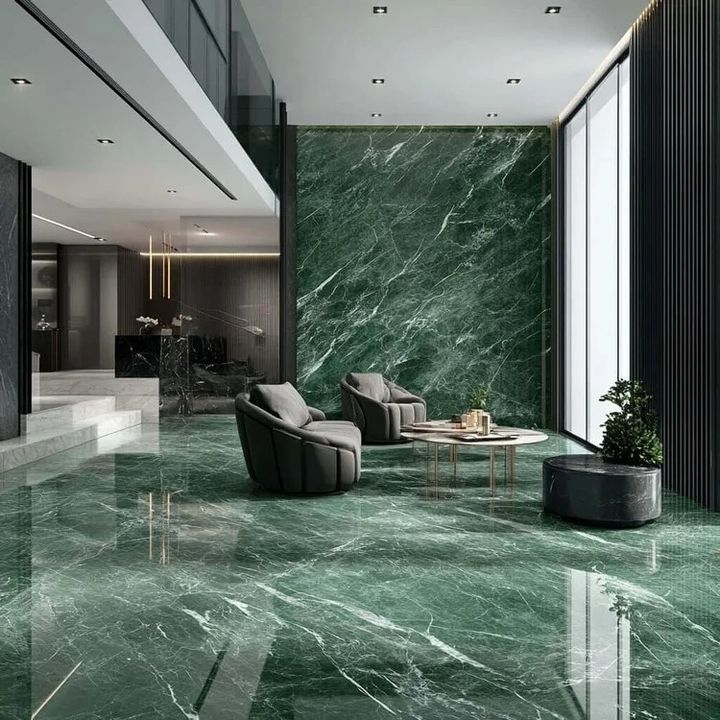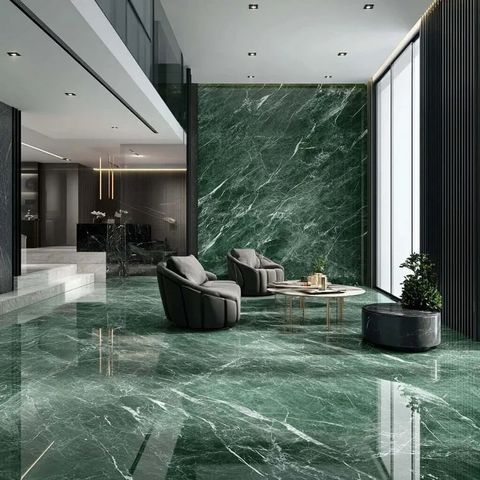
Explore the Details of Marble’s Role in Luxury Design
Marble is a magnificent metamorphic rock, a product of nature's geological artistry. It is formed when limestone is exposed to immense heat and pressure over millions of years, causing it to recrystallize into a dense, interlocking material. This natural process is what gives marble its unique, ethereal beauty. Its surface is characterized by intricate, often swirling patterns known as veining, which are created by mineral impurities present in the original limestone. The color of marble can range from classic white and cream to vibrant greens, blacks, and even pinks, each a testament to the diverse mineral composition of its origin.
The Enduring Importance of Marble Floors

Today, marble flooring continues to be a premium choice for residential and commercial spaces, and its relevance has only grown in a world that values both aesthetics and durability. Its importance extends beyond mere decoration, solving a number of practical and design-related challenges.
Who It Affects
Architects and Interior Designers: These professionals use marble to make a powerful design statement, elevating the aesthetic of a space and creating a sense of luxury.
Real Estate Developers and Homeowners: Installing marble flooring can significantly increase a property's market value and appeal, as it is a highly sought-after feature in high-end homes and commercial buildings.
Building Material Suppliers: The enduring demand for marble drives a global industry, from quarries to suppliers, ensuring a continuous supply of this valuable material.
Hotels, Museums, and Commercial Buildings: Marble is a preferred choice for high-traffic public spaces due to its durability, ease of maintenance, and sophisticated appearance.
Problems It Solves
Aesthetic Enhancement: Marble flooring instantly transforms a space, adding a layer of sophistication and grandeur that is difficult to replicate with other materials. Its natural beauty and unique patterns make every floor a work of art.
Longevity and Durability: When properly cared for, marble floors can last for centuries. This addresses the problem of wear and tear, making it a sustainable, long-term flooring solution that doesn't need frequent replacement.
Hygienic Surface: The smooth, dense nature of sealed marble makes it difficult for dust, dirt, and allergens to accumulate. It is a highly hygienic option that is easy to clean and maintain, making it ideal for homes and public spaces where cleanliness is a priority.
Thermal Regulation: In hot climates, marble's ability to remain cool to the touch provides a natural and energy-efficient way to keep a room comfortable, reducing the reliance on air conditioning.
Recent Updates and Trends
The marble industry is not static; it is a dynamic field where tradition meets innovation. In late 2024 and mid-2025, several trends have emerged, influencing how marble is sourced, designed, and used in modern spaces.
The Return of Bold Veining and Color: While classic white marble remains popular, there has been a significant shift towards more dramatic and colorful varieties. Designers and homeowners are increasingly opting for slabs with high-contrast, artistic veining that makes a strong statement. There is also a growing interest in marbles with unconventional colors, such as deep emerald greens, rich burgundies, and striking blacks, which are used to create unique accent walls and feature floors.
Matte Finishes: In a departure from the traditional high-gloss look, honed or matte-finished marble is gaining popularity. This finish gives the stone a softer, more organic texture, reducing glare and creating a sense of calm elegance. Matte marble is favored in contemporary and minimalist designs where understated luxury is preferred.
Bookmatched Slabs: This technique involves using two or more marble slabs from the same block that are cut and polished to create a mirror image of each other. When installed side by side, they create a stunning, symmetrical pattern that resembles an open book. This trend is being used to create breathtaking feature walls and seamless floor designs that highlight the natural artistry of the stone.
Sustainability and Ethical Sourcing: As environmental awareness grows, consumers are becoming more concerned about the origin of their materials. The marble industry is responding with a greater focus on sustainable quarrying practices. This includes innovations in water recycling, more efficient cutting techniques to reduce waste, and the rehabilitation of quarry sites once operations cease.
Laws and Policies
The marble industry, from quarrying to final installation, is affected by a variety of laws and policies, particularly in India, which is both a major producer and consumer of this natural stone. These regulations are designed to ensure safety, environmental protection, and fair trade practices.
Environmental Regulations: The quarrying of marble and other natural stones falls under strict environmental scrutiny. Laws govern aspects such as land use, water management, and the disposal of waste materials. For instance, regulations may mandate the use of closed-loop water systems to recycle the water used during cutting and polishing, and require quarries to have a detailed plan for land reclamation to restore the environment after extraction is complete.
Mining and Quarrying Laws: The extraction of marble is regulated by government bodies that issue permits and licenses. These regulations often specify the maximum depth of a quarry, the methods that can be used for extraction, and the safety measures that must be in place to protect workers. Compliance with these laws is mandatory for all quarry operators to ensure a safe and sustainable supply chain.
Import/Export Policies: In India, the import and export of marble are subject to specific government policies and tariffs. These may include requirements for minimum import prices (MIP) for certain types of marble slabs and blocks to protect the domestic industry. These policies can affect the availability and cost of imported marble varieties, influencing consumer choices and market trends.
Consumer Protection: Just like with any other product, consumer protection laws apply to marble. Suppliers are required to provide accurate information about the marble's type, origin, and any treatments it has undergone. This ensures that customers receive the quality of material they have paid for and helps prevent fraudulent claims.
Tools and Resources
For individuals and professionals considering marble flooring, a number of tools and resources can provide guidance and support throughout the process, from initial research to final installation and maintenance.
Online Visualization Tools: Many high-end stone suppliers and design software companies offer online tools that use augmented reality (AR) or virtual reality (VR). These tools allow you to upload a photo of your room and "apply" different marble slabs to the floor or wall, giving you a realistic preview of how the final design will look.
Physical Material Samples: Before making a commitment, it is highly recommended to obtain physical samples of the marble. Looking at a sample in the actual space under different lighting conditions is the only way to truly assess its color, veining, and finish.
Fabricator and Installer Directories: Websites for professional associations, such as stone fabricator institutes, often provide directories of certified professionals in your area. Hiring an experienced and certified installer is crucial for a successful marble floor project, as improper installation can lead to costly damage.
Maintenance Guides and Products: The long-term beauty of a marble floor depends on proper care. Many stone care companies offer detailed guides on cleaning and sealing, as well as a range of specialized products like pH-neutral cleaners and impregnating sealers that are essential for protecting the stone from stains and etching.
Frequently Asked Questions
Is marble flooring slippery?
Marble can be slippery, especially when polished to a high-gloss finish or when wet. However, its slip resistance can be enhanced through various finishes, such as honing, which gives it a matte texture, or sandblasting for an even rougher surface. The use of non-slip mats in wet areas and proper maintenance also helps to mitigate this risk.
How often should marble floors be sealed?
Marble is a porous stone, so it is susceptible to staining without proper sealing. The frequency of sealing depends on the type of marble and the amount of foot traffic. For residential floors, it is generally recommended to re-seal them every 1 to 2 years. For high-traffic commercial spaces, it may be necessary to seal them more frequently.
Why is marble more expensive than other flooring options?
Marble's high cost is due to several factors. It is a natural material that must be quarried from the earth, which is a complex and labor-intensive process. Its unique beauty and intricate patterns make it highly desirable. The cost also reflects the high-quality craftsmanship required for cutting, polishing, and installing the slabs correctly.
Can marble floors be repaired if they get damaged?
Yes, minor scratches and etching on marble can often be repaired by a professional stone restoration specialist. For deeper chips or cracks, a skilled professional can fill the void with a matching epoxy and then polish the area to blend with the surrounding stone, making the damage almost invisible.
Conclusion
The appeal of marble flooring is deeply rooted in its unique combination of history, natural beauty, and functional excellence. Its status as a symbol of luxury is not just about its price; it is about its ability to transform a space into a work of art, conveying a sense of timeless elegance and permanence. From ancient civilizations to modern design trends, marble has consistently demonstrated its enduring value. By understanding its properties, the latest innovations in its use, and the importance of proper care, anyone can appreciate why marble floors continue to be a mark of sophistication and a wise investment in the aesthetic and financial value of a property.










